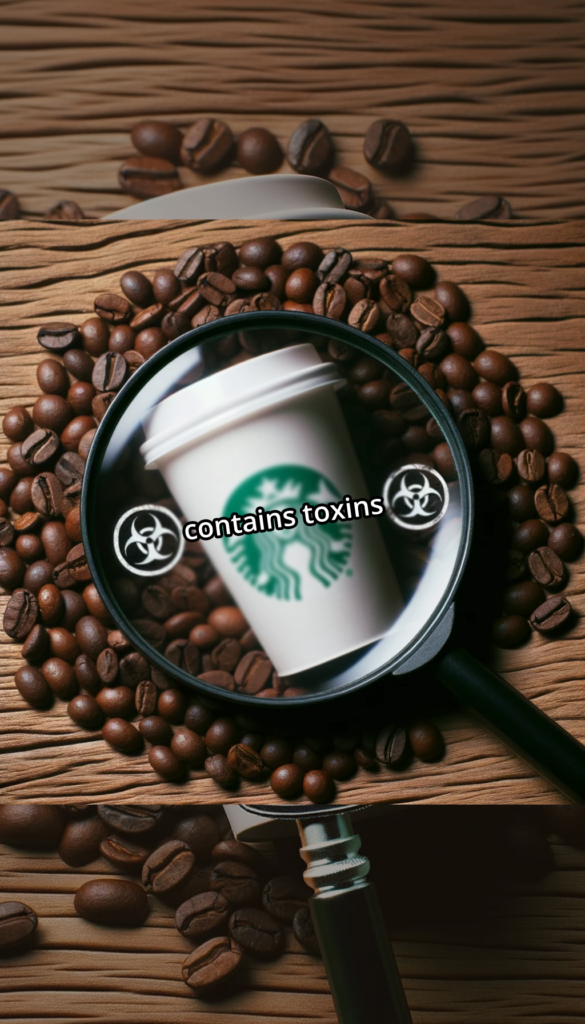
In an era of endless food choices, it can be tricky to make good decisions about what to eat. Ever wondered what lurks behind those ingredient labels? Dive into this article, where we’ve sifted through heaps of scientific data to spotlight some of the not-so-friendly ingredients often hiding in our foods. We’re here to give you the lowdown, so you can make food choices that actually look after your well-being.
High-fructose corn syrup (HFCS) and artificial sweeteners
High-fructose corn syrup, a ubiquitous sweetener in many processed foods and sugary beverages, has attracted significant scientific scrutiny. Numerous studies have established a strong correlation between excessive HFCS consumption and serious health issues.
Health Issues caused by HFCS
- obesity,
- type 2 diabetes, and
- cardiovascular diseases.
Research published in the journals “Current Hypertension Reports” (2010)¹ and “The American Journal of Clinical Nutrition” (2004)² highlights the detrimental effects of excessive fructose intake, underlining the importance of vigilance when it comes to HFCS.
Foods and drinks with the highest amounts of HFCS
- soda and sugary beverages
- candies and confections
- breakfast cereals
- sweet sauces and condiments
- baked goods
Artificial sweeteners like aspartame, saccharin, and sucralose are marketed as low-calorie sugar substitutes. Yet, scientific studies have raised concerns about their potential adverse effects.
Health Issues caused by artificial sweeteners
- metabolic disturbances,
- alterations in gut microbiota, and
- increased cravings for sweet foods.
A study published in the journal “Trends in Endocrinology & Metabolism” (2013)⁶ highlights these concerns, suggesting that moderation and the use of natural sweeteners like stevia or honey may be a wiser choice.
Foods and drinks with the highest amounts of artificial sweeteners
- diet and sugar-free soda
- sugar-free candies
- sugar-free desserts
- sugar-free yogurt
- sugar-free condiments and sauces
Trans Fats
Trans fats, commonly found in partially hydrogenated oils, have long been recognized as harmful to heart health. They elevate levels of low-density lipoprotein (LDL) or “bad” cholesterol while lowering high-density lipoprotein (HDL) or “good” cholesterol, thereby increasing the risk of coronary heart disease. The dangers of trans fats have led many countries to enact bans or restrictions on their use. These findings are corroborated by studies such as one published in the “New England Journal of Medicine” (2006) [3], which emphasizes the necessity of avoiding trans fats in one’s diet.
Foods and drinks with some of the highest amounts of trans fats:
- fried foods
- processed snacks
- baked goods
- margarine
- fast food
Artificial Food Coloring
Artificial food coloring additives, prevalent in candies, cereals, and processed snacks, have been linked to behavioral issues in children, particularly hyperactivity and attention disorders. The “European Food Safety Authority” (EFSA) has assessed the safety of these additives and noted potential adverse effects. Moreover, a study in the journal “The Lancet” (2007)⁴ underscores the concerns surrounding artificial food coloring, suggesting that minimizing their consumption may be prudent.
Artificial food colorings are widely used in the food industry to enhance the appearance of various products. While they are generally recognized as safe by regulatory authorities when consumed in small quantities, some individuals may experience adverse reactions or sensitivities to these colorings. Here are specific potential negative side effects associated with ingesting some common artificial food colorings.
Most toxic artificial food colorings
- Red-40 (Allura Red AC):
- Some individuals may experience hypersensitivity reactions, including hives, itching, or skin rashes.
- In rare cases, Red-40 has been linked to hyperactivity and behavioral issues in children, although scientific evidence on this connection is inconclusive.
- Yellow-5 (Tartrazine):
- Tartrazine has been associated with hypersensitivity reactions in some individuals, leading to symptoms such as hives, itching, or skin rashes.
- There have been anecdotal reports of Tartrazine triggering asthma symptoms in sensitive individuals.
- Yellow-6 (Sunset Yellow FCF):
- Yellow-6 may cause hypersensitivity reactions similar to Tartrazine, leading to skin rashes or itching in some people.
- Blue-1 (Brilliant Blue FCF):
- While considered generally safe, Blue-1 may rarely cause allergic reactions or sensitivity in sensitive individuals.
- Blue-2 (Indigo Carmine):
- Blue-2 is generally considered safe, but like other colorings, it may cause allergic reactions in rare cases.
- Green-3 (Fast Green FCF):
- Green-3 is not commonly used in foods today, but it has been associated with potential allergic reactions in some individuals when used in the past.
- Red-3 (Erythrosine):
- Red-3 has been largely phased out of food products due to concerns about its safety. It was once used as a food coloring but is no longer widely used.
Foods and drinks with the highest amounts of artificial food coloring
- candies
- sugary cereals
- fruit-flavored snacks
- carbonated sodas
- fruit drinks
It’s important to note that some individuals may be sensitive or allergic to certain food colorings, and in rare cases, adverse reactions may occur. Additionally, while these colorings are considered safe in small quantities by regulatory authorities such as the U.S. Food and Drug Administration (FDA), it’s advisable to be aware of their presence in processed foods and make informed choices based on individual preferences and potential sensitivities.
Sodium Nitrite and Nitrate
Sodium nitrite and nitrate, commonly used as preservatives in processed meats like bacon, sausages, and hot dogs, serve to inhibit bacterial growth and enhance color and flavor. However, when subjected to high temperatures, they can form nitrosamines, which are known carcinogens. Research from the “International Agency for Research on Cancer” (IARC) has classified processed meats as Group 1 carcinogens, largely due to their nitrite and nitrate content.⁵ Reducing processed meat consumption or opting for nitrate-free alternatives can mitigate exposure to these toxic compounds.
Foods and drinks with some of the highest amounts of sodium nitrite and nitrate are:
- lunch meats (i.e. sliced ham, salami, turkey, etc.)
- hot dogs
- bacon
- sausages
- canned meats
Monosodium Glutamate (MSG)
Monosodium glutamate (MSG), is commonly used as a flavor enhancer in many processed foods. This syndrome is characterized by symptoms such as headaches, sweating, and nausea. While the scientific evidence linking MSG to these symptoms remains inconclusive, some individuals may exhibit sensitivity. Research from the “International Journal of Food Sciences and Nutrition” (2016)⁷ explores this topic, emphasizing the importance of being aware of products containing MSG and monitoring individual responses.
Foods and drinks with some of the highest amounts of MSG are:
- Chinese cuisine dishes (note: many restaurants provide dishes with no MSG)
- processed and packaged snacks
- canned soups
- fast food items
- certain salad dressings
Artificial Preservatives (BHA and BHT)
Butylated hydroxyanisole (BHA) and butylated hydroxytoluene (BHT), synthetic antioxidants used to prolong the shelf life of numerous processed foods, have raised concerns in the scientific community. Research has suggested that these preservatives may possess carcinogenic properties and could disrupt hormonal balance. A study in the journal “Food and Chemical Toxicology” (2013)⁸ delves into the potential risks associated with BHA and BHT, reinforcing the importance of considering products with natural preservatives and opting for fresh, unprocessed foods whenever possible.
Foods and drinks with some of the highest amounts of BHA and BHT are:
- packaged snacks
- cereals
- chewing gum
- processed meats
- baked goods
PFAS (Per- and Polyfluoroalkyl Substances)
PFAS, a group of man-made chemicals used to make food packaging resistant to water, particularly non-stick cookware and microwave popcorn bags, has raised significant health concerns. They were trademarked by Dupont as “Teflon” and are also known as “forever plastics ” because they last thousands of years.
Health issues and diseases associated with PFAS
- cancer: particularly testicular and kidney cancer
- liver damage: including liver enzyme changes
- immune system effects: reduced antibody response to vaccines
- thyroid disorders: hormonal imbalances and issues
- high cholesterol: increased LDL and total cholesterol levels
- fertility issues: reduced fertility in both men and women
- pregnancy complications: pre-eclampsia, low birth weight, and developmental issues
- hormone disruption: altered levels of hormones like estrogen and testosterone
- developmental delays: impact on growth, learning, and behavior of infants and older children
(Do note that while there’s mounting evidence for these effects, causality is still under study.)
Research conducted by the Environmental Working Group ⁹ highlights the pervasive presence of PFAS in the food supply chain, emphasizing the need for informed consumer choices.
Foods and drinks the highest amounts of PFAS
- microwave popcorn bags
- fast-food wrappers
- non-stick cookware
- plastic food packaging materials
- plastic water bottles and beverage containers
- plastic-lined paper cups
Controversy with Starbucks
Starbucks has been scrutinized for the presence of PFAS in their food packaging, notably in their paper cups. While your Pumpkin Spice Latte might give you autumnal bliss, the cup it comes in might contain these chemicals to provide that leak-proof, grease-proof utility we all so desire in our portable caffeine vessels.
Why is this concerning? PFAS chemicals are linked to a host of health problems (as listed above). Although the jury is still out on the exact levels at which they’re harmful, most people agree that less is definitely more—more safety, that is.
So, despite Starbucks’ claims of moving towards sustainability and social responsibility, the PFAS controversy lingers. They are not the only culprits, mind you, but given their high-profile status and immense reach, they’re certainly under the microscope. The good news is Starbucks has stated they will rid their products of PFAS by the end of 2023. However, there are no guarantees franchises won’t continue to use older products, so the absolute safest option to avoid these toxins when picking up your daily latte is to bring your own mug.

Phthalates
Phthalates are chemical compounds used to make food packaging materials and food processing equipment more flexible. Emerging research has suggested potential health risks associated with phthalate exposure, including endocrine disruption and adverse reproductive outcomes. A study published in “Environmental Health Perspectives” (2019)¹⁰ underscores the need to address phthalates as a significant concern in our food system.
Foods and drinks with some of the highest amounts of phthalates are:
- processed and packaged foods
- fast food
- dairy products
- meat and poultry
- cooking oils and fats
It’s important to note that regulatory agencies are taking steps to reduce the use of phthalates and PFAS in food packaging and processing. However, these substances can still be present in the environment and some products.
To minimize exposure to phthalates and PFAS, consider the following:
- Opt for fresh, unprocessed foods whenever possible.
- Reduce consumption of highly processed and packaged foods.
- Avoid using non-stick cookware at high temperatures.
- If concerned about PFAS exposure from takeout containers or microwave popcorn bags, consider transferring food to your own containers or using alternatives like glass or stainless steel.
While it’s challenging to completely eliminate exposure to phthalates and PFAS, making informed food choices and being aware of potential sources can help reduce your overall intake of these chemicals.
Stay Realistic
In a world where processed and convenience foods dominate our diets, awareness of potentially toxic ingredients is paramount. This comprehensive analysis, informed by the collective expertise of the scientific community, underscores the significance of making informed dietary choices.
Although these ingredients are prevalent in American society, this information is not meant to incite paranoia or fear. Because these toxic ingredients are publicly known, many food & beverage companies have provided alternatives that do not contain these ingredients. Additionally, becoming familiar with these toxins helps encourage a more diverse diet (ideally incorporating more whole, less-processed ingredients) to naturally reduce the consumption of these detrimental ingredients and lead to a longer, healthier life.
References:
- Stanhope KL, Havel PJ. Endocrine and metabolic effects of consuming beverages sweetened with fructose, glucose, sucrose, or high-fructose corn syrup. Current Hypertension Reports. 2010.
- Bray GA. Soft drink consumption and obesity: it is all about fructose. The American Journal of Clinical Nutrition. 2004.
- Mozaffarian D, et al. Trans fatty acids and cardiovascular disease. New England Journal of Medicine. 2006.
- McCann D, et al. Food additives and hyperactive behavior in 3-year-old and 8/9-year-old children in the community: a randomized, double-blinded, placebo-controlled trial. The Lancet. 2007.
- International Agency for Research on Cancer. IARC Monographs on the Evaluation of Carcinogenic Risks to Humans. Volume 114: Red Meat and Processed Meat. 2018.
- Swithers SE. Artificial sweeteners produce the counterintuitive effect of inducing metabolic derangements. Trends in Endocrinology & Metabolism. 2013.
- Yang W, et al. Monosodium glutamate avoidance for chronic headache in Chinese adults: a hospital-based study. International Journal of Food Sciences and Nutrition. 2016.
- Ali SF, et al. Butylated hydroxyanisole and butylated hydroxytoluene are neurotoxic in neonatal rat cerebellum. Food and Chemical Toxicology. 2013.
- Environmental Working Group. “The Real Polluters: A Top 10 List of Chemical Companies Dumping PFAS into Our Air and Water.” (2019)
- Trasande L, et al. Phthalates and the diet: a review of exposure estimates and an assessment of health risks. Environmental Health Perspectives. 2019.










